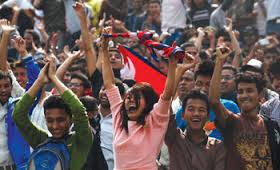Nepal has no dearth of working-age population

Manjima Dhakal / Kathmandu, Jan. 6: In the 1990s, the fertility rate of Nepali women was 5.8 children. However, the most recent census data, 2021 has revealed a significant decline, with the current fertility rate falling to 2.1 children per woman, a level considered ideal for the present demographic landscape. While this shift aligns with global trends towards lower fertility rates, stakeholders are expressing concerns about the potential for further decline in the coming years if the current trends persist.
The Population Studies Department of Tribhuvan University emphasises the crucial role of fertility, mortality and migration as key components shaping population dynamics. Despite having the desired fertility rate, there is growing anxiety regarding the impact of high migration rates. Stakeholders are wary that huge migration could lead to population imbalances, affecting various aspects of societal and economic structures.
A total of 2,169,478 Nepalis are now living abroad, an increase from 1,921,494 in 2011. Among them, 1,684,029 are males and 237,400 are females.
Since 2011, more and more Nepalis have migrated abroad in search of better opportunities which in turn is a critical factor for the lower population growth rate in Nepal, read the census report of 2021.
Despite the coronavirus pandemic, more than 240,000 labour permits were granted in 2021 alone, which does not include workers moving to India. The census report also highlighted that the number of women who migrated to foreign countries has increased by 71 per cent compared to the previous surveys owing to the development of information and technology.
Dr. Padma Prasad Khatiwada, Associate Professor in the Population Studies Department of TU, highlighted the global trend of a significant migration of young populations from poor nations to wealthy ones. He emphasised the challenge faced by developed countries in managing their youthful demographic entry, while others grapple with potential shortages in the working-age population shortly.
The census indicates that 27 per cent of the current population falls below 15 years of age while the ageing society (above 65 years) constitutes 7 per cent and is on an upward course. Concurrently, the working-age
population, spanning 15 to 64 years, stands at 66 per cent, which is a perfect composition. Despite having a sufficient working-age demographic, Dr. Khatiwada emphasised that the numbers suggest the potential for significant contribution to national prosperity now. But, it can’t happen because of various challenges.
As the working-age population moving towards an ageing population due to a low birth rate, it is the right moment to use the existing workforce for national progress. But, unfortunately, this potential is hindered by the increasing trend of youth migrating abroad in pursuit of better opportunities, Khatiwada said.
Dr. Yogendra Bahadur Gurung, head of the Population Studies Department, said that the authorities needs to design its policy and programmes according to demographic trends, but currently, political parties are designing it according to their choice randomly. For instance, the nation is presently constructing schools without considering demographic trends. However, in the coming years, these establishments might become unnecessary due to the impact of declining birth rates.
Dr. Kamala Devi Lamichhane, lecturer at the Department, said now parents are not discriminating against their children by sex after their birth but it is found in the census that they did discriminate before their birth.
The census report reveals a disparity with 100 girls born for every 114 boys, different from the universal ratio of 100 girls to 105 boys. Such gender imbalances could lead to future challenges.
Hence, the nation needs proficient demographers to analyse and communicate this information to stakeholders to plan and work according to the requirements. However, the Department has been facing a shortage of students to pursue population studies, Gurung said. “Therefore, the Department has been launching various schemes to lure students,” he said.
